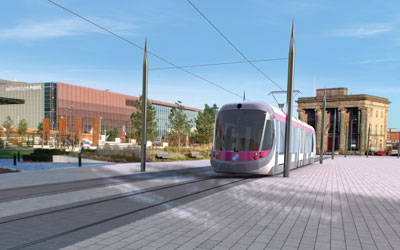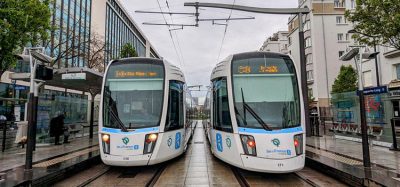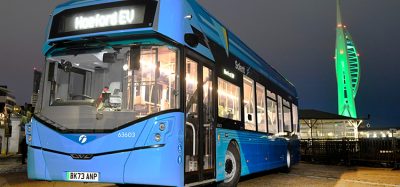Birmingham Midland Metro – a catalyst for growth and regeneration
- Like
- Digg
- Del
- Tumblr
- VKontakte
- Buffer
- Love This
- Odnoklassniki
- Meneame
- Blogger
- Amazon
- Yahoo Mail
- Gmail
- AOL
- Newsvine
- HackerNews
- Evernote
- MySpace
- Mail.ru
- Viadeo
- Line
- Comments
- Yummly
- SMS
- Viber
- Telegram
- Subscribe
- Skype
- Facebook Messenger
- Kakao
- LiveJournal
- Yammer
- Edgar
- Fintel
- Mix
- Instapaper
- Copy Link
Posted: 6 May 2015 | Paul Griffiths, Centro’s Programme Director for the expansion of the Midland Metro light-rail system
The Midland Metro in Birmingham has unveiled the next phase of expansion, taking take the route through the heart of the city’s historic Digbeth area. Paul Griffiths, Centro’s Programme Director for the expansion of the Midland Metro light-rail system, provides details of the project and how the light-rail expansion will contribute to growth and regeneration…


Transport chiefs have opted to run the trams along High Street Deritend, serving key locations like Digbeth Coach Station and the Custard Factory arts centre.
The decision by Centro and Birmingham City Council follows a public consultation in which 74% of people voted for the High Street option rather than an alternative route along Fazeley Street.
The first section of the Eastside Metro route was agreed in 2014 and will run between the extension currently being built at Bull Street in the city centre, via Albert Street and on to the forthcoming High Speed Two (HS2) high-speed rail station at Curzon Street.
But with the securing of extra Government money last summer to take the extension further into Digbeth, the public were offered the chance to have their say on which of two possible routes the trams should take.
The overwhelming favourite was for a 1.5km-long route from the HS2 station along New Canal Street and Meriden Street before turning left on to High Street Deritend. It then runs along the centre of the carriageway with a stop close to the junction of Milk Street to serve Digbeth Coach Station and the Custard Factory before turning left into Adderley Street where a terminus is proposed.
This extension has an important role to play in making sure the region has the transport connections it needs to support economic growth and jobs.
Tens of thousands of people in the Black Country and Birmingham already have access to the Metro and this extension will give them a direct link to the high-speed rail network, which in turn will provide connections to key national and international destinations.
It will also offer that same connectivity to people in the east of Birmingham and help in the movement of the 12,000 West Midlands people who are expected to arrive at the HS2 station every hour.
The Digbeth extension is a key part of the wider Birmingham Curzon HS2 Master Plan which has been drawn up by the city council and Centro to lay down a blueprint for the redevelopment of 350 acres of land around the HS2 station. The scheme includes shops, 350,000m2 of offices, a hotel and 2,000 homes.
Councillor Tahir Ali, Birmingham City Council’s Cabinet Member for Development, Transport and the Economy, said: “The Midland Metro project is hugely important for Birmingham as it will create new jobs, encourage business growth and help boost the local economy. This proposed Digbeth extension will take this vision even further, ensuring that people and businesses across the city are connected as never before. We asked local people to come forward with their views on where this extension should go and I am delighted that we have now been able to choose a route based on the overwhelming response we had to our public consultation.”
Councillor Ali said the extension would also complement and enhance other key improvements to Birmingham’s transport network. These included a rebuilt New Street Station, the Metro extension being built between Snow Hill and New Street, future tram routes to Centenary Square and along Broad Street to Edgbaston and the development of the Birmingham Smithfield vision. The route would also link to the Metro expansion plans announced by Birmingham City Council as part of its Birmingham Smithfield project to redevelop the site of the old Wholesale Markets. It will also dovetail with Metro expansion plans outlined in the East Birmingham Prospectus for Growth.
The High Street Deritend route option including construction and additional new trams is expected to cost around £130 million.
Depending on the timing of Government approval for a Transport and Works Act Order to allow Centro to construct and operate the route, the extension could be open by 2023.
This would help support and stimulate further economic growth and new jobs in the Eastside district ahead of the scheduled opening of HS2 in 2026.
The alternative route through Digbeth would have been just over 1km-long with trams running down Fazeley Street before turning onto Liverpool Street with a stop close to the junction with Great Barr Street and Heath Mill Lane, and then turning into Adderley Street.
Exciting times indeed, and just the latest exciting chapter development in the story of the Midland Metro that has made extraordinary progress with a new fleet of trams and a radically extended depot already in service and will continue to do so.
The first phase to come on line will be the 1.5km extension from Snow Hill station to New Street station in Birmingham city centre, which is well underway and scheduled for completion in autumn 2015. Once open it will serve the newly refurbished New Street station that will be home to the Grand Central shopping centre housing big brand retail names. Construction of the extension will deliver 1,300 jobs and add £50 million each year to the local economy.
Some people have questioned the point of the Snow Hill–New Street extension. It was dubbed a white elephant that will simply mean the lazy no longer have to walk from one side of the city centre to another. They are missing the point. What these people fail to realise is that it is the springboard for a much wider Metro network spreading far and wide across the city.
This extension will, on its own, deliver better links across the city to areas such as the Jewellery Quarter as well as improving linkages from the Black Country to Birmingham and the national rail network.
However, work is already underway on the extension that will take Metro on from New Street up to Centenary Square, serving showcase locations such as Symphony Hall, the Library of Birmingham and the cultural life of Broad Street and Brindleyplace.
Utility diversions are already underway and the main construction is expected to start during 2016.
The Centenary Square terminus is designed to provide excellent interchange between Metro, Sprint bus rapid transit and bus and will be integrated with the adjacent developments at Paradise Circus, which will see the demolition of the old Central Library and a massive office and road redevelopment, and Arena Central which will provide a new office for 1,000 HSBC staff.
Sprint will be a landmark in rolling out new modes of public transport for the West Midlands with high quality buses providing a tram like service. The first Sprint route will link from the city centre to Quinton via Broad Street and the arterial A456 Hagley Road. It will cost £15 million and is funded through Centro and the government via Greater Birmingham and Solihull LEP. Development work is already underway and Sprint will start to go live in 2018.
Broad Street/Hagley Road was chosen because currently there are only two means of transport to Quinton from Birmingham – the bus and the car. Sprint will integrate with the existing bus network as well as Metro services. The proposal includes 16 new stops along the route from Colmore Row in Birmingham to Ridgeway Avenue/Hagley Road West in Quinton. It will see road widening and a new bus lane installed in Hagley Road, and traffic light reconfiguration to give priority to Sprint vehicles. Provisional funding was announced in the Local Growth Deal in July 2014, and with the programme currently under review construction is likely to start in 2017.
However, Midland Metro developments are not solely concentrated in Birmingham.
At the other end of the line in Wolverhampton work is progressing on a £4.5million programme replacing worn out on-road track from The Royal stop by the city’s ring road, through to the St George’s terminus.
Frustratingly, this has been subject to major delays following the discovery of old mineworkings in November directly underneath the track. These old workings, which date back to the Industrial Revolution, are dotted around Wolverhampton and the wider Black Country when coal and iron ore was mined extensively across the region.
In this instance it was a major problem. The dimensions of the uncovered workings were huge – 12m-deep, 55m-long and 20m-wide. Remedying this was not going to be a quick fix. Centro sought advice from other light-rail systems in the UK and around the world to see if they had ever dealt with a similar problem and to identify the best solution.
Our engineers eventually devised a solution consisting of a geo-textile membrane and geogrid to stabilise the ground, in between layers of compacted hardcore and capped with a reinforced 5m-wide concrete slab running through the 55m length of the workings.
The delay meant services did not resume from The Royal until the end of March, although while this took place, rebuilding work of the new St George’s terminus was accelerated and new track laid heading out of it.
This paves the way for a proposed Metro extension in Wolverhampton city centre which goes to a public inquiry in summer 2015. Subject to approval, this would see the extension run along Piper’s Row with a stop directly outside the bus station before terminating at the rail station.
The bus station in Wolverhampton is the busiest in the West Midlands and is a focus for services into and out of the city centre.
The locations of the two new tram stops are vital in terms of offering a full and complete interchange between modes of transport.
A stop on Piper’s Row would allow easy movement for people between trams and buses and is also convenient for the shops and businesses nearby.
A new railway station building and tram stop there would also create improved facilities for pedestrians, taxis, pick-up and drop-off and car parking in the rail station area.
Although at the time of writing this article these proposals remain subject to approval, they are indicative of the ambition we have for Midland Metro.
Biography
Paul Griffiths is Centro’s Programme Director for the expansion of the Midland Metro light-rail system. He is responsible for leading the team delivering the current expansion project which includes an extension into Birmingham City Centre, a new tram fleet and an expanded depot as well as a series of further expansions which will create a network of light-rail in the West Midlands. Additionally, Paul leads on new technology for UKTram – the umbrella body for light-rail in the UK. Prior to his role at Centro, Paul was Projects Director at GMPTE (now Transport for Greater Manchester) where he worked on the expansion of Manchester’s Metrolink system. He has also worked for English Partnerships and consulted on a range of light-rail schemes.
Related topics
Business Models, Infrastructure & Urban Planning
Issue
Issue 2 2015
Related modes
Light Rail
Related cities
United Kingdom
Related organisations
Midland Metro







